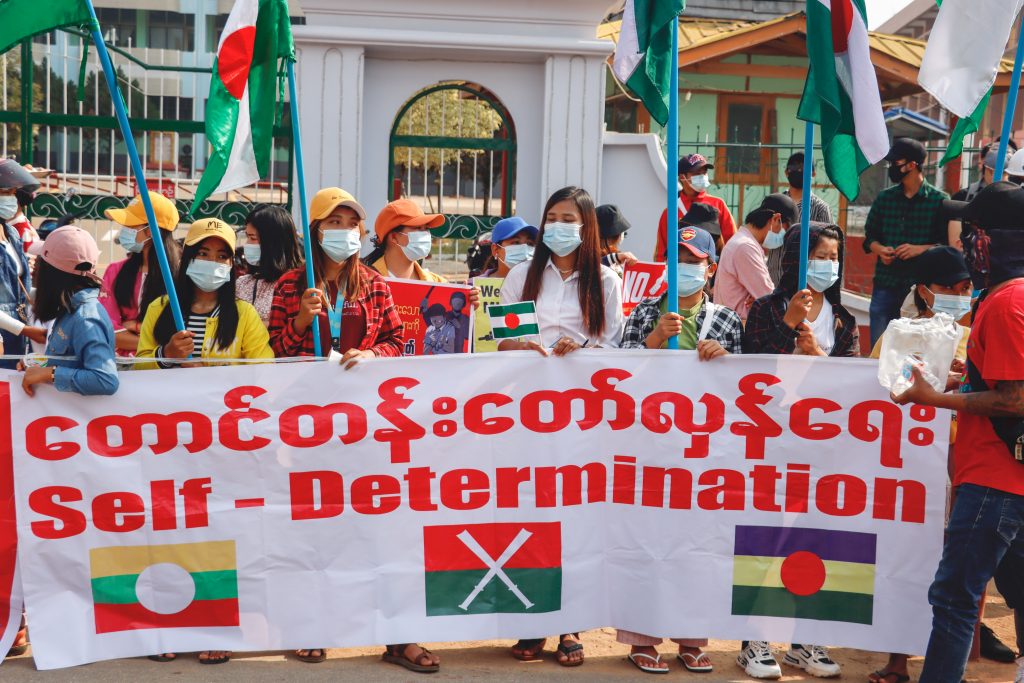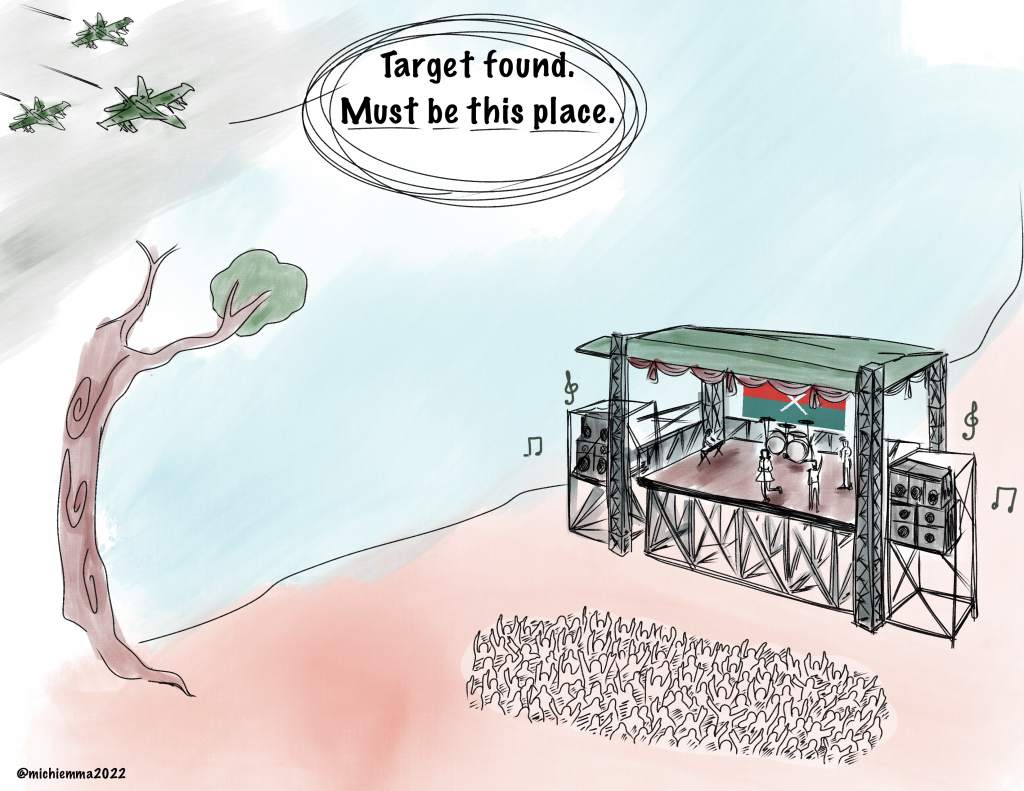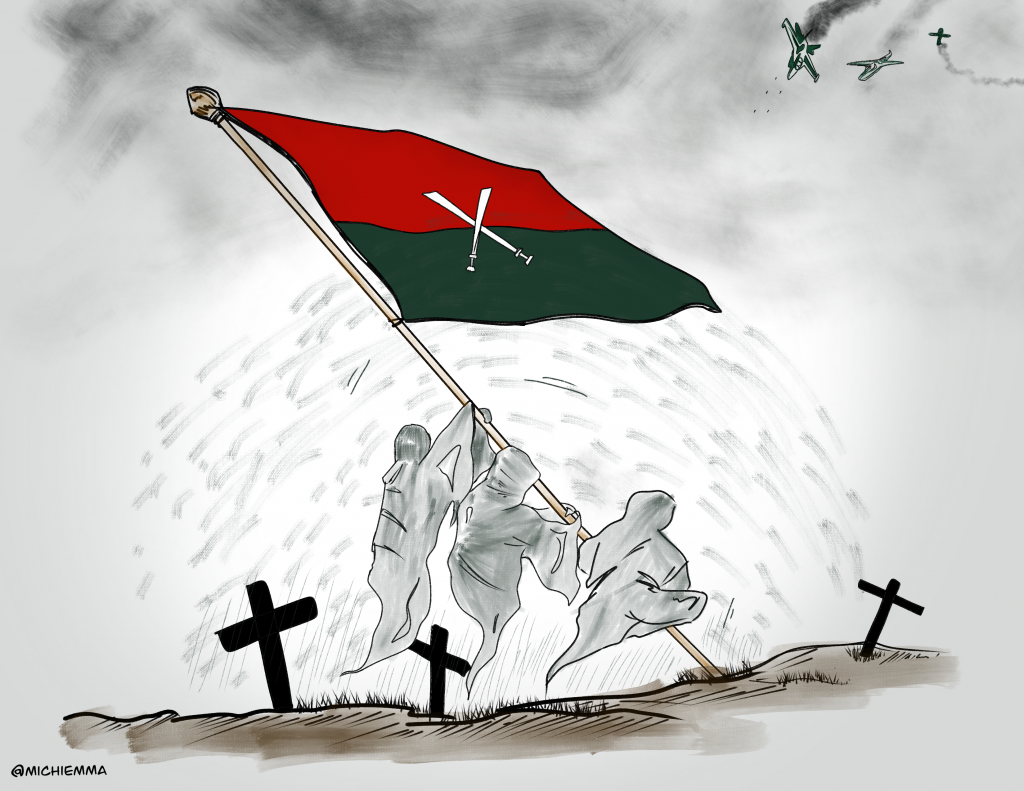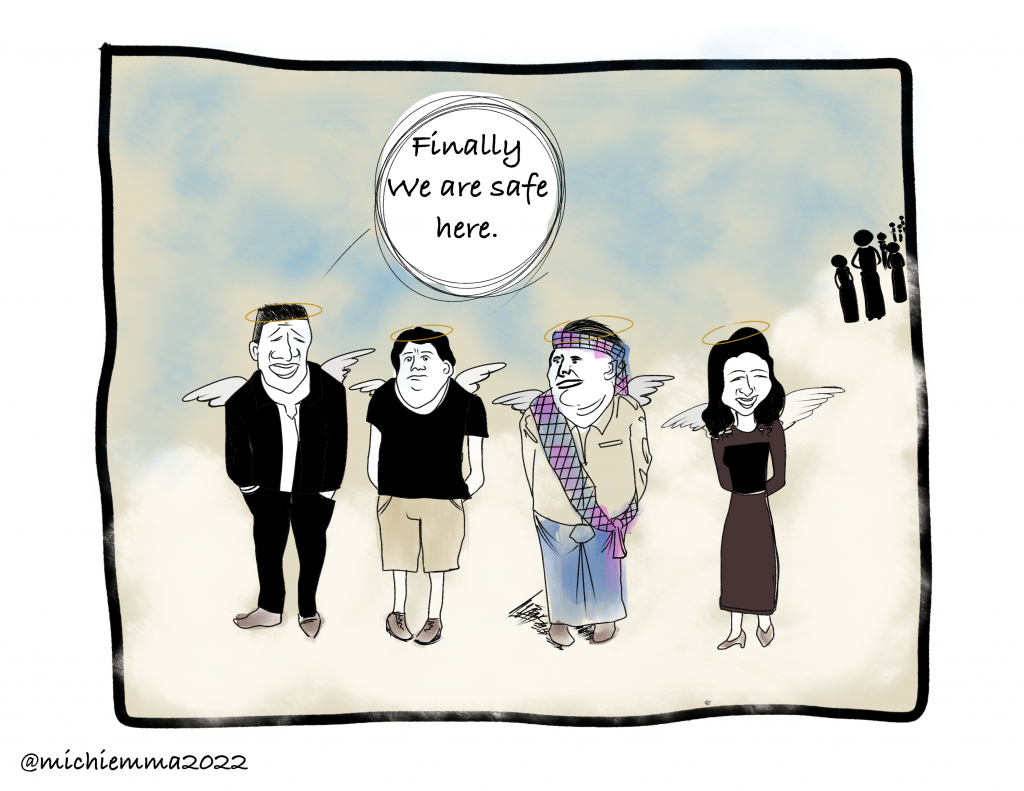Airstrikes Epidemic (I) // Open wounds in the heart of Kachinland
A NANG PA, KACHIN STATE // A targeted airstrike during a concert held by the Kachin Independence Organization (KIO) for its 62 years anniversary in A Nang Pa killed dozens of people and traumatized the state. Kachin people will always remember this epochal traumatic event which happened on a clear October night in the context of the endemic war engulfing the state.
Kachin State is the northernmost region of Myanmar borders China and India and has rich natural resources, which makes it very significant on a geo-political level. A decade-long protracted war between the KIA and the Burmese military, so-called Sit-tat, began in 1961 with the deterioration of trust between the two parties and the failure to address the main socio-political-economic injustices and grievances suffered by Kachin people since the post-colonial time. A ceasefire was enacted between 1994-2011 though peace was just an empty word as the various forms of marginalization of Kachin people continued by the hegemonic burmanized central state. Historically, targeting civilians is not a new tactic by military juntas. Insurmountable incidents and tragedies caused by direct violence of the Burmese army towards civilians in Kachin state have been extensively reported by human rights organizations and medias.

Kachin’s deadly and dusty jade mines are famous for being a ‘cursed treasure’, worth $31 billion of profits in 2014 only, which mostly benefit the Burmese military as reported by Global Witness. Moreover, the exploitation of rare earth mines is detrimental to the socio-economic well-being of local people.
The most outrageous terror act in the region after the 2021 coup was a targeted airstrike on Kachin people who were attending a musical concert held by the KIO for its 62 years anniversary in A Nang Pa. Although the junta claimed that its target was a gathering of the KIA, the military wing of the KIO fighting for self-determination, it is clear that the attack was aimed at the civilians and businessmen who were participating in the festive event. In the KIO statement on October 25th, it mentions that A Nang Pa was not a KIA outpost, but was known as a resting place for travelers. Many families who earned a living by selling food in the village’s stalls became victims of the four bombs falling from the sky on October 23rd night.

Between 60 and 80 people were killed and more than 60 injured according to different sources. Among the casualties, children and young people who were accompanying their parents, senior officials from KIA Brigade (9), and popular Kachin musicians Aurali, Galau Yaw Lwi and Ko King are mourned by the whole community. Some of the victims’ relatives could not even find their bodies, while others did not have a chance to organize a proper funeral ritual as bodies were not allowed by the military to be brought back home from A Nang Pa. Injured people were also not allowed to pass through military checkpoints to seek emergency medical help, an infringement by the Burmese military of the fundamental human right to healthcare.
Many people lost their lives due to the escalation of armed conflicts between the Sit-tat and non-state armies across Myanmar after the 2021 military coup. At least 57 airstrikes were undertaken in 15 townships across the country in the month of October 2022, with the A Nang Pa incident being the deadliest air attack by the military since the coup.


Survivors and victims’ relatives carry trauma for generations which cripples the well-being of society. To heal them, to imagine restorative justice and reconciliation among conflict-affected communities, it is vital to listen to their voice to achieve and sustain people-centered justice. The local and international civil society organizations as well as United Nations agencies should step up to support the victims of A Nang Pa and facilitate the care they need.